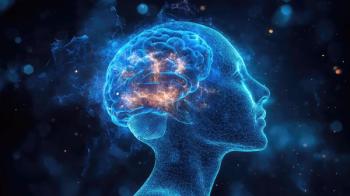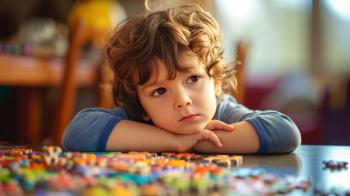- Vol 32 No 6
- Volume 32
- Issue 6
Severe Mental Illness Declining in Young People
A new study shows that rates of severe mental illness in youths have dropped substantially since 1996. What might study results portend for psychiatric practice?
[[{"type":"media","view_mode":"media_crop","fid":"28750","attributes":{"alt":"","class":"media-image media-image-right","id":"media_crop_6927002070067","media_crop_h":"0","media_crop_image_style":"-1","media_crop_instance":"3862","media_crop_rotate":"0","media_crop_scale_h":"98","media_crop_scale_w":"150","media_crop_w":"0","media_crop_x":"0","media_crop_y":"0","style":"float: right;","title":" ","typeof":"foaf:Image"}}]]For some time now, the prevailing wisdom-based largely on CDC reports-has been that rates of mental illness are steadily climbing in children and adolescents. But a
For their study, Trends in Mental Health Care Among Children and Adolescents, Dr Olfson and colleagues analyzed trends in outpatient use of mental health services in 53,622 children aged 6 to 17 years during 1996-1998, 2003-2005, and 2010-2012. Parents were asked to complete a 13-question survey (the Columbia Impairment Scale) that asked them to rate on a scale of 0 to 4 how they thought their child was doing overall. A score of 0 indicated “no problem; a score of “4” indicated “a very bad problem.” Questions probed such issues as general mood, (“Having fun?”); social adjustment (“Getting along with other kids his/her age?”); and general behavior (“Behavior at school/on the job?”). Scores of 16 or higher indicated severe impairment.
A particularly striking and unexpected finding was the 16% drop-from 12.8% to 10.7%-in the percent- age of youngsters with severe men-tal impairment from 1996 to 2012. “The decline in the number of young people with severe mental health impairment did take me by surprise, said Dr Olfson in an interview with Psychiatric Times. (That interview is
This unexpected finding contrasts starkly with government surveys that suggest increases in rates of severe mental disorders during roughly the same period. For example, in a 2013 report, “Mental Health Surveillance Among Children-United States, 2005-2011,”
Other reports from the CDC also showed sharp upticks in the prevalence of certain mental health disorders. For example,
The Olfson study offers fuel for vocal critics of the reports of increasing rates of serious mental illnesses among children. Prominent among them is Allen Frances, MD, who wrote: “Don’t believe the statistics-they are
Along with a decline in the percentage of young people with severe mental health impairment, Olfson and colleagues also found that the percentage of children and adolescents who received outpatient mental health care rose significantly-from 9.2% to 13.3% between 1996-1998 and 2010-2012. Especially noteworthy: during the same period, the estimated number of youngsters above the impairment threshold who were treated rose from 1.56 million a year to 2.28 million a year. And the number of youngsters below the impairment threshold who were also treated increased by almost twice that rate (from 2.74 million to 4.19 million).
Other notable findings:
• The percentage of youngsters who received psychotherapy rose significantly, from 4.2% in 1996 to 6.0% in 2012.
• The use of psychotropics (stimulants, antidepressants, antipsychotics) increased significantly between 1996 and 2012. For those with severe impairment, respective increases were: 13% to 22.6% for stimulants; 6.2% to 13.4% for antidepressants; and 1.1% to 7.5% for antipsychotics.
Dr Olfson also noted that there was faster proportionate growth in the treatment of kids with more severe conditions. This suggests that “we are making real progress in reaching kids who are at greatest need for treatment. At the same time, however, more than half of the children who have severe mental health problems did not receive any treatment for their symptoms. So despite progress, gaps and challenges remain. Clearly, more needs to be done by primary care clinicians, schoolteachers, and other concerned professionals to discuss with parents options for getting their kids who need it safe and effective mental health care.”
What might study results portend for psychiatric practice? “This new report suggests that we must be doing something right,” says Dr Olfson. “Although it is difficult to attribute the decrease in severe mental health problems in children to an increase in treatment, it is possible that this is contributing to these trends. While there has been a fair amount of criticism about mental health treatment of children-and particularly concerns about unnecessary psychiatric care-our report suggests that we are moving in the right direction.”
References:
1. Olfson M, Druss BG, Marcus SC. Trends in mental health care among children and adolescents. N Engl J Med. 2015;372:2029-2038.
2. Perou R, Bitsko RH, Blumberg SJ, et al; Centers for Disease Control and Prevention. Mental health surveillance among children-United States, 2005-2011. MMWR Surveill Summ. 2013;62(suppl 2):1-35.
3. Austism spectrum disorder. February 26, 2015.
4. Visser SN, Bitsko RH, Danielson ML, et al. Treatment of attention deficit/hyperactivity disorder among children with special health care needs. J Pediatr. 2015;166:1423-1430.
5. Frances A. Treat the classroom, not the kids. April 2, 2014.
6. Carey B. Severe mental illness found to drop in young, defying perceptions. New York Times. May 20, 2015.
Articles in this issue
over 10 years ago
Introduction: Reflections on the Crossing of Cultures in Psychiatryover 10 years ago
A Tour de Force of the History of Psychiatryover 10 years ago
New Findings About Youth Suicideover 10 years ago
Clinical Considerations in Renal Failure, Depression, and Deliriumover 10 years ago
Can Climate Be Hazardous to Your Mental Health? A View From Historyover 10 years ago
The Most Widely Prescribed Med for Medicare Recipients?Newsletter
Receive trusted psychiatric news, expert analysis, and clinical insights — subscribe today to support your practice and your patients.














